Many of us seek more privacy in our backyards so that we can enjoy our outdoor time without the feeling of being overlooked by the neighbors living next door.
Also, some of you might just be looking to screen a bright street lamp, an ugly building, a climbing frame, or the view of a neighbor’s shed that is visible straight from your backyard. Keep reading as I share with you the best cheap fast growing privacy trees.
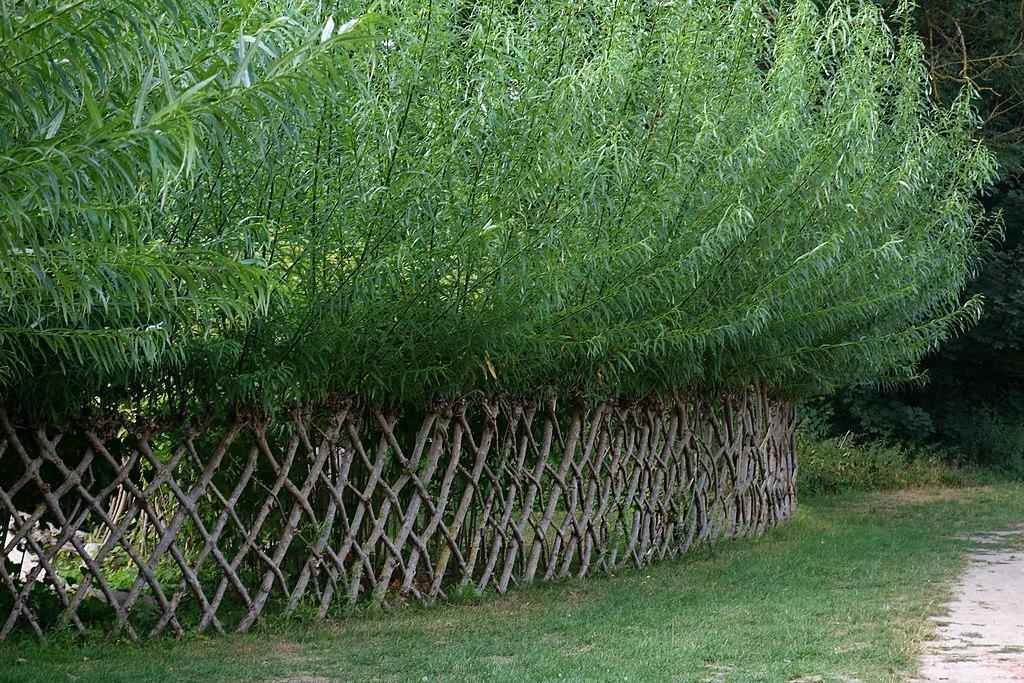
Privacy trees provide a sense of seclusion and create a rich gardening backdrop.
These problems can easily be fixed by using a fence made up of privacy trees. Planting a natural privacy fence is an eco-friendly and sustainable way to hide your backyard from people’s view. However, that is not their only positive outcome.
When planted in close proximity to each other, privacy trees such as cypress, cedar, maple, and pine trees create a lush green fence that provides you with a gorgeous gardening backdrop and conceals you from your nosy neighbors. In addition, a privacy tree fence creates shade and shields your property from noise and wind. Also, more plants mean more places and food for wildlife, too.
That said, there is much more to consider when planting privacy trees. So, if you are interested, read on. We will tell you everything there is to know about privacy trees.
Consider These When Choosing Privacy Trees!
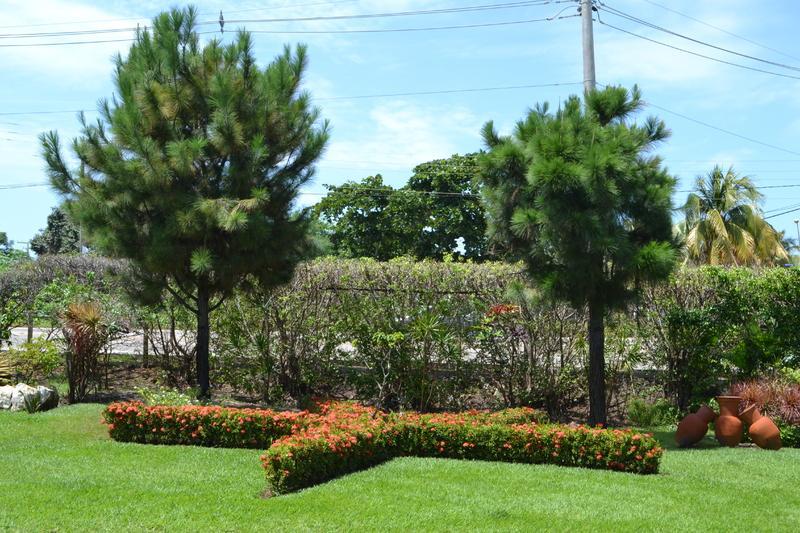
Unlike wood or metal fences, privacy trees cannot be placed everywhere. So, choose wisely!
When choosing trees for privacy, there are many things to consider. For example, you need to figure out which USDA Hardiness Zone you live in and ensure that you choose a species that can survive your region’s local climate. In addition, you need to determine how much shade or sun your backyard gets and how big or small it is.
That is not all, though! You will also need to consider how big or wide your selected tree species will grow and whether it will match perfectly with the vegetation in your backyard.
Also, you need to factor in the water availability. Some trees will require more water than others to grow to their full potential and stay green and serene.
Furthermore, keep in mind that some trees that are often used as living fences grow quickly. That means you will need to spend more time pruning plants in the backyard. You will also want to plant these trees a bit away from walkways, driveways, or patios. I mean, you won’t want their roots to lift up these hard structures in your backyard.
Sounds like a lot? Well, let’s just skip these requirements for now and move on to describing the top features of a privacy tree. We will get back to these factors that you need to consider while choosing a privacy tree at the end of this blog.
Features Of Good Privacy Trees
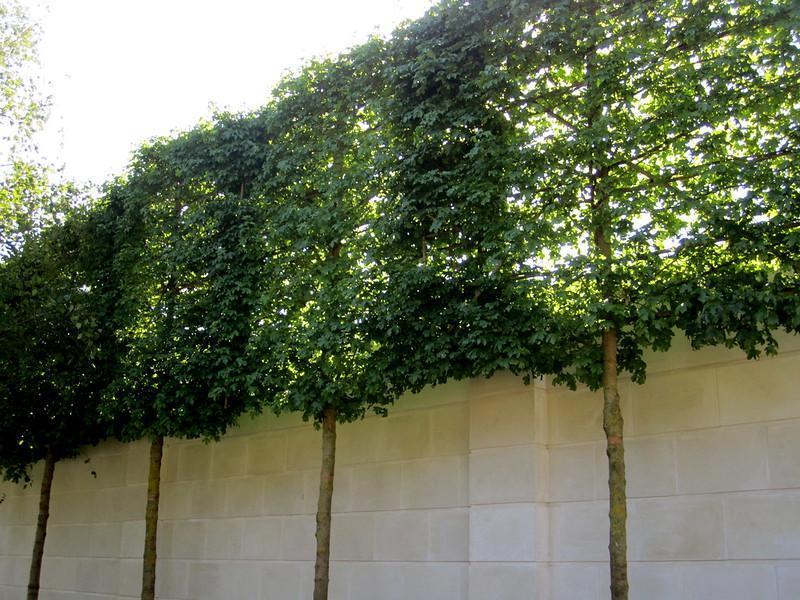
Privacy trees are easy to grow and can survive a wide range of soil conditions.
It is essential to discuss the qualities that all good privacy trees possess before delving into which specific species are best for creating a living fence in your backyard.
So, let’s get started:
Good Privacy Trees Grow Quickly
Think about it, if you want to shield your backyard from people’s view, would you like to wait about ten years before you could have that comfort?
Obviously, no. This means there is no place for slow growers when it comes to privacy trees. So, a good privacy tree will be a moderate to fast grower that can shield your home in almost no time.
Good Privacy Trees Grow Tall
If you want to obscure the view of a neighbor or your view as it directly lands on an ugly building or your neighbor’s shed, you will want your privacy tree to be at least six to eight feet tall.
Any less than that, and the trees will not be able to block the view. All the trees included in this meet this criterion, and you won’t go wrong with any of them.
Good Privacy Trees Are Low Maintenance
Think about it …why are you planting privacy trees? Obviously, to increase your privacy and comfort while you are sitting in your backyard.
Therefore, a good privacy tree needs to be low maintenance. You do not want always to be taking care of it.
I mean, no matter what tree you will plant, you will have to water, prune and fertilize it. However, an ideal candidate for a privacy tree will be one that is tough as a nail, does not require much upkeep and care, and is pest and disease resistant.
Good Privacy Trees Can Be Planted Together
When looking for a screen to keep curious eyes off, you wouldn’t want it to have large spaces. Therefore, when picking a tree for a natural privacy fence, make sure that it can be planted closely together.
Some trees need a lot of space to grow, and they won’t make great privacy trees. Good privacy trees have to thrive in dense plantings.
Good Privacy Trees Look Nice
If you are going to plant a living fence, why not select something that is pleasing to the eyes and comforting to look at?
I mean, you would not want to gaze at ugly, dry pines, needles, or brown leaves all the time. So, go for a tree that stays green all year round, has soft, lush, and green vegetation, and attracts plenty of birds if that is your thing.
Good Privacy Trees Are Easily Available
Just imagine you spend days learning about a tree that can be used as a privacy fence, determining its requirements and how you can help it to grow to its full potential, only to find out that you can’t find it anywhere in your local nursery or gardening store.
So, what I am trying to say is that a good privacy tree should be easily available. All the trees included in this list are usually available easily in the United States.
Good Privacy Trees Are Evergreens
Think about it. Do you want privacy in your backyard just for a season or two or all year long? The answer will obviously be: all year long.
So, why would you use a tree as a privacy fence if it will lose its leaves every other season? So, I am trying to say that you will want a privacy tree that keeps its leaves all year round and has thick, dense branches.
Good Privacy Trees Are Easy To Grow
Once again, you are planting privacy trees to lessen your problems, not increase them. So, a good privacy tree should not require extra pampering. Instead, it needs to be hardy and survive in a range of soil and weather conditions.
Also, it needs to be able to grow without much care so that you can enjoy the comfort of your backyard without much hassle.
Best Privacy Trees For A Natural Fence
Now that you know what you need to keep in mind when choosing a good privacy tree and what are the qualities of a good privacy tree. Let’s go ahead and see what some of your options are and what growing conditions they need to thrive.
1. Goldspire Ginkgo

The brilliant yellow foliage of Goldspire Ginkgo will keep your landscape lit up even in autumn.
| Scientific Name | Goldspire Ginkgo |
| Height Rane | Approximately 15 feet tall |
| Width Range | About five feet wide |
| Sunlight Requirements | Full sun is best, although trees are tolerant of some shade. |
| Water Requirements | Prefers a slightly moist, well-drained soilHowever, it will tolerate extended rainy and dry periods |
| Fertilizer Requirements | A slow-release fertilizer with an NPK ratio of 10 – 10 – 10 or 12 – 12 – 12 Do not need much fertilization once established |
| Preferred Climate | Ginkgo trees do best in USDA hardiness zones four through nine. |
| Growth Rate | Ginkgo trees have a moderate growth rate Expect around 2-3 ft. of added growth per year |
If you have a small backyard, Goldspire Ginkgo will be a perfect choice for you. It has colorful foliage and does not require a lot of space. Also, the Tree has a triangular shape. It grows tall but not wide and is perfect for windbreaks, hedges, and privacy screens.
The Tree grows well in average loamy soils and has a good drought, pest, disease, and heat tolerance. In addition, Goldspire Ginkgo does not require much care once established and maintains its colorful foliage throughout the summer. The foliage turns somewhat buttery shades of gold and yellow before autumn before falling.
So, if you are interested, you can buy Goldspire Ginkgo using this link. The Tree is about one foot when shipped and adds about two to three feet of growth yearly.
2. Weeping Podocarpus
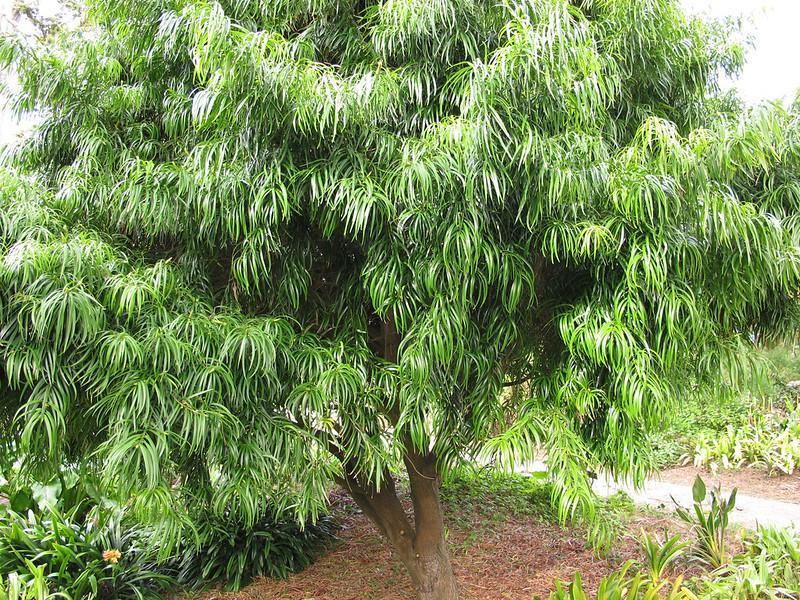
The Weeping Podocarpus, also known as the African Fern Pine, is a bushy evergreen plant.
| Scientific Name | Podocarpus gracilior |
| Height Rane | The plant can eventually reach 30 to 35 feet in height |
| Width Range | About five feet in width |
| Sunlight Requirements | Grows best in full sun. However, it will survive partial shade as well. |
| Water Requirements | They need consistent watering during their first year of growth. Drought-tolerant once established Allow the soil to dry between waterings |
| Fertilizer Requirements | It does not require very much fertilizer However, yearly light fertilizing will encourage lush, green growth |
| Preferred Climate | USDA hardiness zones: 10A through 11 Prefer cool temperatures between 50°to 75 °F (10° to 23.9 °C). |
| Growth Rate | Slow to moderate grower |
The graceful Weeping Podocarpus is an excellent addition to any landscape because of its dense shade, and it looks like a green cloud when used as a landscaping tree. It is a very hardy plant that can survive pretty much any urban conditions, and I have seen it thrive well in Arizona, Florida, and California. The plant is named so because of its drooping branches.
In addition to being magnificent, the plant requires very little upkeep. You only need to water it once every while, and it requires little to no pruning if you do not mind the low-hanging branches.
However, avoid planting it near patios or other hard structures as the Tree can grow about 40 feet tall, and its large roots can lift these structures.
Want this? You can order it right now using this link.
3. Emerald Green Thuja
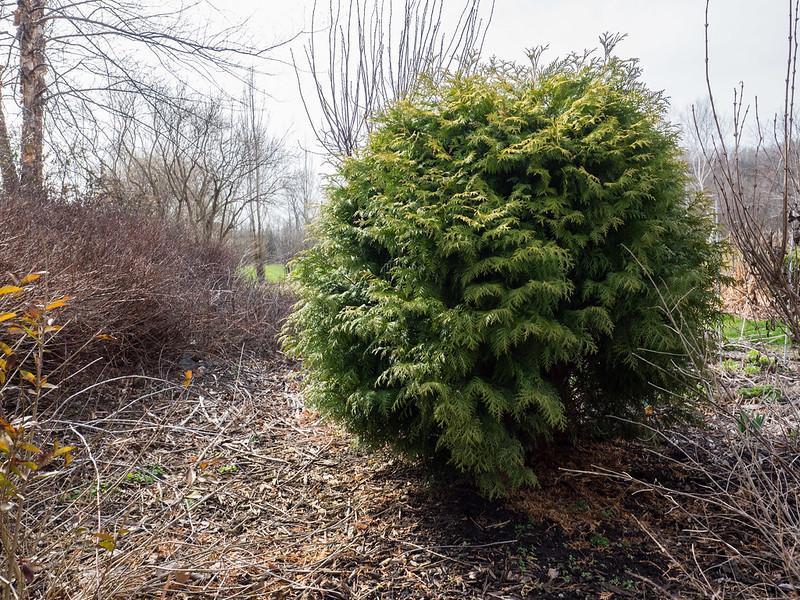
The Emerald Green Thuja is a fantastic choice as it is easy to care for and gorgeous all year round.
| Scientific Name | Thuja occidentalis ‘Smaragd’ |
| Height Rane | It will grow to be around 15 ft. tall at maturity. |
| Width Range | It has a spread of 3 to 4 feet at maturity. |
| Sunlight Requirements | These trees need at least six hours of sunlight per day to flourish. However, they can survive partial shade |
| Water Requirements | The plant must be watered twice a week for the first few weeks. Once established, it needs 0.8 cups of water every nine days. |
| Fertilizer Requirements | Does not require much fertilization. Slow-release fertilizer with a 10-10-10 ratio is best. |
| Preferred Climate | USDA Hardiness Zones: 3, 4, 5, 6, 7, and 8. Performs better in a cold climate Also, prefers dry, low-humidity regions |
| Growth Rate | These trees grow about 1-2 feet annually until they are established. They can take 10-15 years to reach their mature height |
Emerald Green Thuja is one of the thickest evergreens you can plant and use as a natural fence in your backyard. It is an excellent choice for those tight spots in your yard, and its pest resistance and shimmering emerald color make it very popular among homeowners.
Moreover, the emerald foliage remains green throughout the year, is exceptionally fragrant, and provides year-round interest, especially during the holiday season. Furthermore, unlike other arborvitaes, emerald thuja retains its magnificent color even in cold winter.
Sounds like something you want in your yard? Order using the link here.
4. Green Giant Thuja
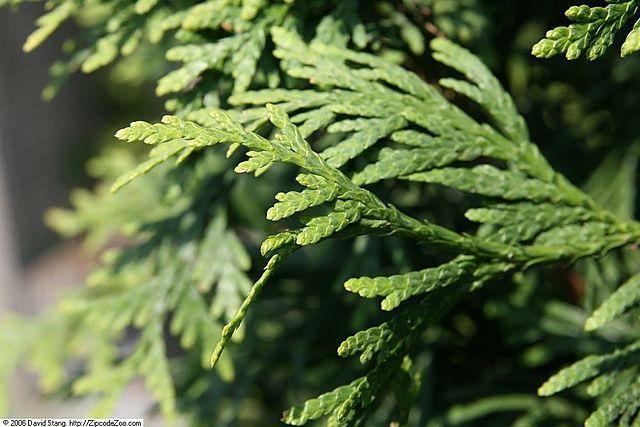
Look no further than the Thuja Green Giant if you need a fast-growing evergreen for a privacy hedge.
| Scientific Name | Thuja (standishii x plicata) ‘Green Giant’ |
| Height Rane | The mature height of this plant is about 50 to 60 feet. |
| Width Range | 12 to 20 feet wide at maturity. |
| Sunlight Requirements | Thuja Green Giants can grow in full sun to partial shade. However, they need at least four hours of direct, unfiltered sunlight per day. |
| Water Requirements | Water every day or two for the first 2 to 3 months until established. After that, water about an inch every week or ten days. |
| Fertilizer Requirements | For Thuja Green Giants, you need a fertilizer with a high first number. Also, experts recommend slow-release granular fertilizer for arborvitae trees. |
| Preferred Climate | USDA Hardiness Zones: 5, 6, 7, and 8.The plant thrives in heat and humidity However, they are cold hardy down to about -20 °F |
| Growth Rate | Fast-growing evergreen—shooting up by as much as 3 feet per year until maturity. |
The green giant thuja is a fast-growing, vigorous, and large arborvitae that makes a perfect choice for gardening windscreens and natural privacy screens in backyards. Its conical to slightly pyramidal form features dense foliage that turns dark green during winter.
In addition, the plant is quite a disease and pest hardy, and unlike other thujas, deer won’t go near it, making it an excellent choice as a natural fence in country homes. All in all, it is a superb privacy plant and will allow you to hide messy views all year long.
Want to order Green Giant Thuja? Use the link here.
5. Sky Pencil Holly
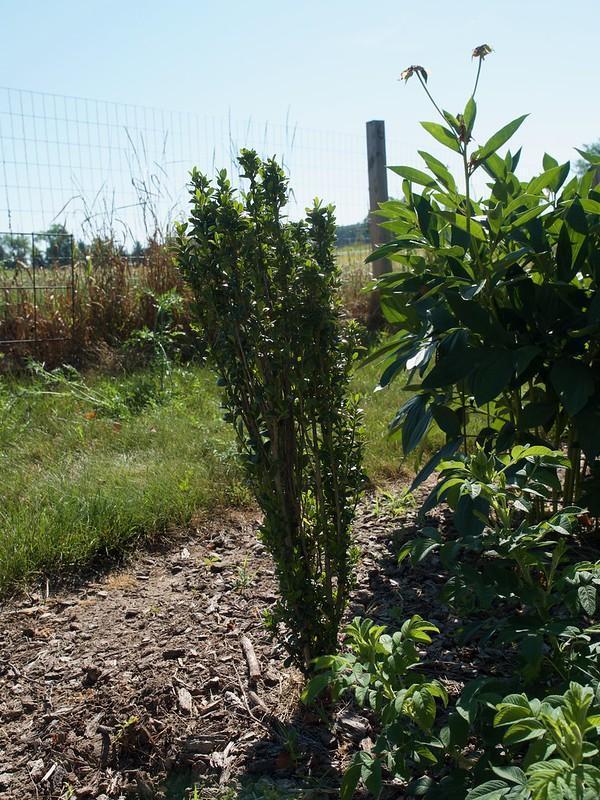
The Sky Pencil’s widespread appeal stems from the fact that it grows quickly and requires little care.
| Scientific Name | Ilex crenata ‘Sky Pencil’ |
| Height Rane | The plant can reach a height of up to 10 feet at maturity. |
| Width Range | Approximately 2.5 to 3.0 feet wide at maturity. |
| Sunlight Requirements | It does best in full sun to partial shadeNeeds at least 6 hours of sunlight per day |
| Water Requirements | Established plants need watering only during dry spells. However, water deeply after planting till well established |
| Fertilizer Requirements | It needs to be fertilized once annually with a slow-release fertilizer Fertilization is best done in spring |
| Preferred Climate | USDA Hardiness Zones: 6, 7, 8, and 9.Prefers to grow in average to moist conditions Prefers light, slightly acidic, moist, well-drained soils but is highly adaptable. |
| Growth Rate | A fast-growing shrub that will grow up to 10 inches in a year |
Sky pencil is an evergreen shrub with small glossy leaves that stay on the plant year-round. It is relatively small, about six to eight feet high, densely branched, and has columnar, upright growth. It was introduced in the United States by the National Arboretum, and its thin growth habit makes it an excellent choice as a fence in small yards.
You can also plant them on your patio or in containers around your home for an Instagram-ready look. It looks especially great when grown as an accent tree around the exteriors, alone as an ornamental, and in narrow hedges.
So, if you want to buy it, you can order it using this link.
6. Spartan Juniper
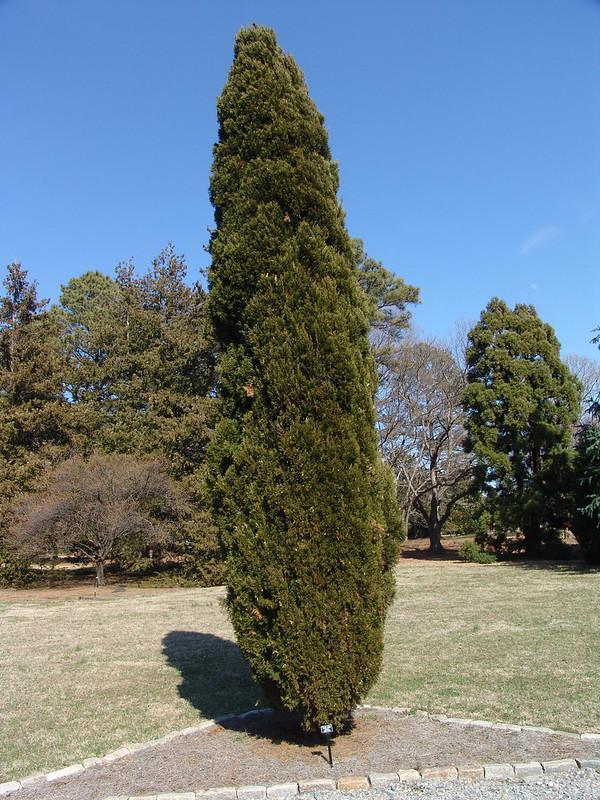
Spartan juniper trees are pyramidal with dense branches and deep green year-round color.
| Scientific Name | Juniperus chinensis ‘Spartan’ |
| Height Rane | Mature trees range in height from 15 to 20 feet |
| Width Range | Mature trees have a spread of 5 to 6 feet |
| Sunlight Requirements | The Spartan Juniper should be planted in full sun. They thrive in full sun—at least six hours of direct, unfiltered sunlight per day. |
| Water Requirements | These trees require very little water, doing well with just natural rainfall But when grown in a container will need to be watered once a week |
| Fertilizer Requirements | Juniper trees are not heavy feeders but still need fertilizing. Choose a slow-release fertilizer with an NPK value of 16-4-8 or 12-4-8. |
| Preferred Climate | USDA Hardiness Zones: 4, 5, 6, 7, 8, and 9. Junipers prefer open, sunny locations in well-drained soils. Thrives in a dry climate where there is no rain |
| Growth Rate | It may grow to 20 feet tall in 15 years. An annual growth rate of 12 to 15 inches (30 – 35 cm). |
Spartan Juniper is a fast-growing evergreen with densely branched, column-like growth that acts remarkably well as a windbreak, privacy screen, and natural fence. And if you are looking for a hardy, low-maintenance, and versatile evergreen, it might be perfect.
Spartan junipers can grow well in a wide range of soils and require little to no upkeep. That means it is especially easy to grow, no matter where you live. It adds lovely accent lines to a yard and also makes a beautiful standalone specimen.
In addition, its columnar to pyramidal growth makes a great exclamation point in the landscape. If you want to use them as privacy screens, plant the specimens about five feet apart, and they will soon grow into a thick and dense hedge.
You can purchase spartan junipers using the link here.
7. Leyland Cypress
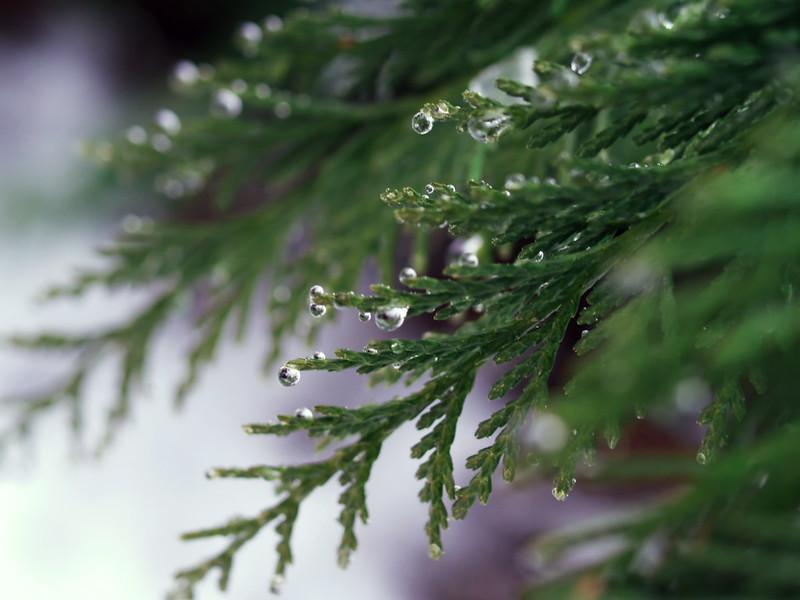
The Leyland cypress is known for its rapid growth and slim shape across the U.S.
| Scientific Name | Cupressus × leylandii |
| Height Rane | It typically grows as a tree to 60 to 70 feet tall unless it is kept pruned. |
| Width Range | The Leyland cypress grows to a spread of 15 to 25 feet at maturity. |
| Sunlight Requirements | Leyland cypress trees flourish in full sunlight. When planted in the shade, it rapidly thins and sheds lower branches. They need at least six hours of direct, unfiltered sunlight per day. |
| Water Requirements | Water your Leyland cypress tree deeply and irregularly about once a week Also, you want the soil to be moist but not stay soggy. Lack of adequate water accelerates the sloughing process. |
| Fertilizer Requirements | Fertilize the Leyland cypress tree twice a year ( in spring and early fall) Use a slow-release, balanced fertilizer with an NPK value of 10-10-10. |
| Preferred Climate | USDA Hardiness Zones: 6, 7, 8, 9, and 10. with temperatures no lower than minus 8 degrees Fahrenheit. |
| Growth Rate | These trees spread and merge at a rate of 2 to 3 feet per growing season |
Known for its slender shape and rapid growth, Leyland Cypress has gained widespread popularity in the United States as a privacy tree. The Tree will maintain the color of its foliage even in temperatures as low as zero degrees centigrades. In addition, its dense foliage ensures you enjoy a good privacy screen in any open area around your home.
Not only that, but its conical shape can also add aesthetic value to your garden and yard. Leyland Cypress trees also grow rapidly, thrive in various soils, and are very cold-hardy. So, they might be the perfect choice if you are from a cold region.
If you want to order Leyland Cypress, you can do it using the link right here.
8. Hybrid Willow Tree

Willow hybrid trees grow a staggering 6 to 10 feet per year.
| Scientific Name | Salix xrubens |
| Height Rane | Hybrid Willows will mature at around 50 to 75 feet tall |
| Width Range | At maturity, these trees can be up to 35 feet wide |
| Sunlight Requirements | Full sun and partial shade are best for this Tree Grow best in full sun or at least six hours of unfiltered sunlight daily. |
| Water Requirements | Water new willow hybrids twice a week They will tell you when they need water when the leaves start turning yellow Established trees need deep watering of one inch per week |
| Fertilizer Requirements | Feed it annually in early spring Use a 10-10-10 fertilizer at the rate listed on the label. |
| Preferred Climate | USDA Hardiness Zones: 6, 7, 8, 9, and 10. These hybrid willow trees are suitable for warm climates. |
| Growth Rate | This Tree will surprise you with its rapid growth of about 12 feet per year |
No matter where you live in the country, if you are looking for a natural privacy fence, you cannot go wrong with hybrid willow trees. It grows in various climates and soil conditions and can add as much as six to 10 feet of growth per year.
Furthermore, these trees have excellent pest and disease resistance, so you will have no trouble growing them. Besides being used as a privacy screen, these trees can also be used as windbreaks and ornamental trees.
You can even use them as fast-growing shade trees. However, as with any rapidly growing tree, you will need to water and fertilize well till they get established. However, once done, you will have a dense, thick cover year around.
Want this? You can order hybrid willow trees using this link here.
9. Eastern Redcedar
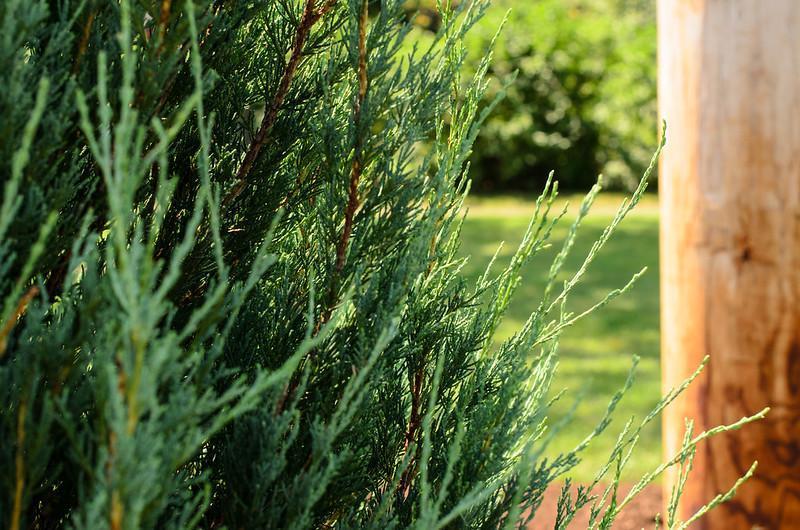
This common native evergreen is the most common conifer in the eastern part of North America.
| Scientific Name | Juniperus virginiana |
| Height Rane | It typically grows 30 or more ft tall, with some specimens reaching over 80 ft |
| Width Range | The eastern redcedar grows to a spread of 8 to 20 feet at maturity. |
| Sunlight Requirements | The eastern red cedar requires full sun to grow well It should get at least six hours of direct, unfiltered sunlight each day. |
| Water Requirements | After planting, eastern red cedar trees need to be watered every other day. However, one established it has minimal watering needs. |
| Fertilizer Requirements | Eastern red cedar grows slowly and doesn’t require much fertilizer. Fertilize with formulations that promote woody, strong growth |
| Preferred Climate | USDA Hardiness Zones: 2, 3, 4, 5, 6, 7, 8, and 9. The Tree is very hardy and can survive a range of climate conditions |
| Growth Rate | It grows at a medium rate, with height increases of 13 to 24 inches per year. |
This evergreen is a common sight throughout the eastern and plain states of the United States, where it can be seen scattered across abandoned fields, in fence rows, and on road cuts, especially in places where limestone content in the soil is high.
These trees can add a terrific aesthetic touch to any garden and look beautiful when fully grown. Moreover, they are perfect for adding finishing touches and decorating lawns, especially during the holiday season in the cold winter months.
Last but not least, these trees also attract wildlife. So, if you plant them in your backyard, you will enjoy a dense, thick evergreen natural fence and the sight of beautiful birds and wandering squirrels. I mean, you cannot go wrong with this Tree.
Want to order? Use this link.
10. Flowering Dogwood
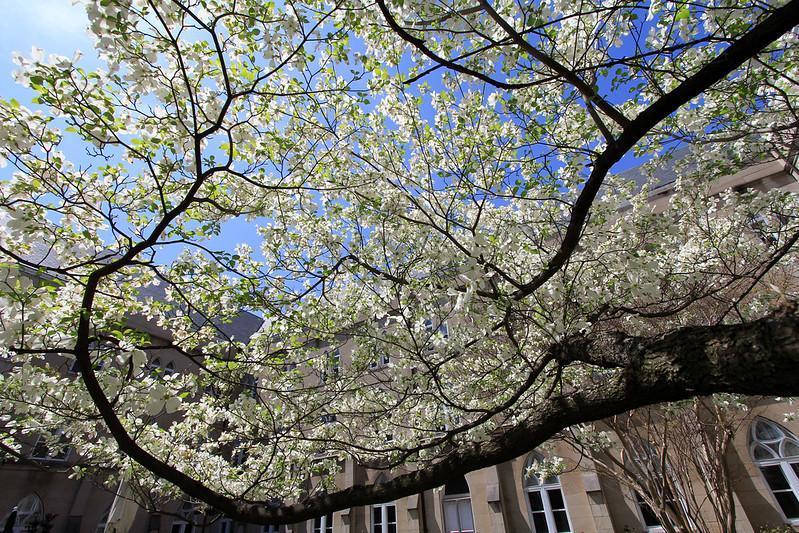
Dogwood trees are well-known for the white or pink blossoms they display in the spring.
| Scientific Name | Cornus florida |
| Height Rane | The Tree will grow 40 feet tall when grown as an understory tree |
| Width Range | The flowering dogwood grows to a spread of around 25 feet at maturity. |
| Sunlight Requirements | Dogwoods can be planted in full sun or partial shade However, trees planted in partial shade generally perform better. |
| Water Requirements | New dogwood trees should get about an inch of water each week However, once established, you only have to water when in severe drought. |
| Fertilizer Requirements | A slow-release tree and shrub fertilizer will work well for dogwoods. Dogwood trees grow well with a 12-4-8 fertilizer ratio. |
| Preferred Climate | USDA Hardiness Zones: 5, 6, 7, 8, and 9. Will not survive in places where the temperature drops below -26 °C |
| Growth Rate | Dogwoods grow at a slow to moderate rate (about 20 feet in 25 years). |
If you are looking for a natural fence with flowers, you cannot go wrong with flowering dogwood. The Tree has it all. It can survive even under buildings or large trees in the summer, thanks to its broad canopy. Whereas, in the spring, it will light up the space with its lovely, small, pink-to-white flowers.
Not only does it look pretty, but it is also easy to care for. Its interesting growth habit proved interesting to any landscape or garden setting. In addition, its foliage, flowers, and fruits will attract wildlife, including birds and squirrels, that will keep the place alive.
Unfortunately, the Tree is prone to many diseases and pests due to its delicate nature. Nevertheless, if you want it, you can order it here.
11. Cherry Blossom Tree
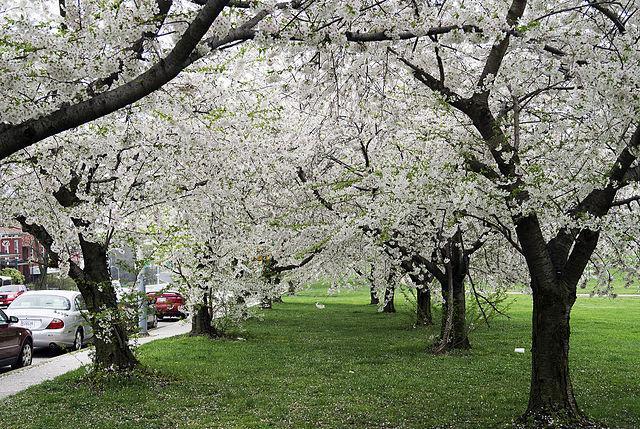
The cherry blossom is a woody plant that comes in a wide variety of shrubs and trees.
| Scientific Name | Prunus subg. Cerasus |
| Height Rane | Flowering Cherry Trees can grow anywhere from 15 to 30 feet high |
| Width Range | Cherry blossom trees often grow canopies that spread 15 to 30 feet wide |
| Sunlight Requirements | Flowering Cherry Blossom Trees require full sunlight to grow best. They need at least 6 hours of direct sunlight per day. |
| Water Requirements | Watering cherry trees during their first year is extremely important. Once established, water once every two to three weeks. |
| Fertilizer Requirements | Cherry Trees grow best if they are fertilized lightly in the spring These trees prefer a low-nitrogen fertilizer such as 5-10-10 or 10-15-15. |
| Preferred Climate | USDA Hardiness Zones: 5, 6, 7, and 8. These trees prefer subtropical to temperate climates of the middle latitudes. |
| Growth Rate | Between 1 and 2 feet per year |
Cherry blossom trees are often used in parks, lining sidewalks and lawns to create visual interest, as they are known for their stunning blossoms. However, did you know these ornamental cherry trees also make excellent privacy screens?
So, if you have a yard that opens up to a busy road, or you just have curious neighbors and could use some privacy, I highly recommend that you create a natural fence out of these stunning flowering cherry trees around your yard.
At the right time of the year, they will blanket your yard with flowers of white and pink color. However, keep in mind that in order to survive flowering, cherry blossom trees need direct sunlight at least 6 hours a day and well-draining soil.
Nevertheless, if you want to order it, use this link here.
12. Nellie Stevens Holly Tree

The dark green leaves of the Nellie Stevens holly shrub remain glossy all year long.
| Scientific Name | Ilex x ‘Nellie R. Stevens’ |
| Height Rane | Nellie Stevens Hollies typically reach a height between 15 and 25 feet. |
| Width Range | It is a broad pyramidal-shaped evergreen that can grow 10 to 15 feet wide. |
| Sunlight Requirements | Nellie Stevens holly can survive in full sun or partial shade However, it must receive at least 4 hours of sunlight daily. |
| Water Requirements | Nellie Stevens holly needs about one inch of water per week Water new trees twice a week for the first two months. Mature trees are very drought-tolerant and hardy. |
| Fertilizer Requirements | Feed your Nellie Stevens Holly tree in early spring with a balanced fertilizer In late fall, apply one cup of 10-5-5 fertilizer per plant. |
| Preferred Climate | USDA Hardiness Zones: 6, 7, 8, and 9. These trees enjoy warm weather but can survive freezing temperatures. |
| Growth Rate | They can grow as much as 3 feet a year. |
Over the recent years, Nellie Stevens Holly Tree’s popularity has skyrocketed as a privacy tree and as a hedge thanks to its rapid growth and dense, thick foliage.
Moreover, unlike other hedge trees whose foliage can turn somewhat brown during drought or heat of the summer, Nellie Stevens Holly Tree keeps its green color year round.
In addition to acting as an excellent privacy screen for the yard, Nellie Stevens Holly Tree brings bright green colors to the outdoor space, provides natural shade, and reduces noise. Moreover, it is adaptable and can survive in various conditions.
The flowers appear during the spring; however, they are not very noticeable and remain hidden under the dense canopy. However, you will definitely notice the crimson berries in the fall. So, if you want this Tree in your backyard, please order via the link here.
13. Thundercloud Plum Tree
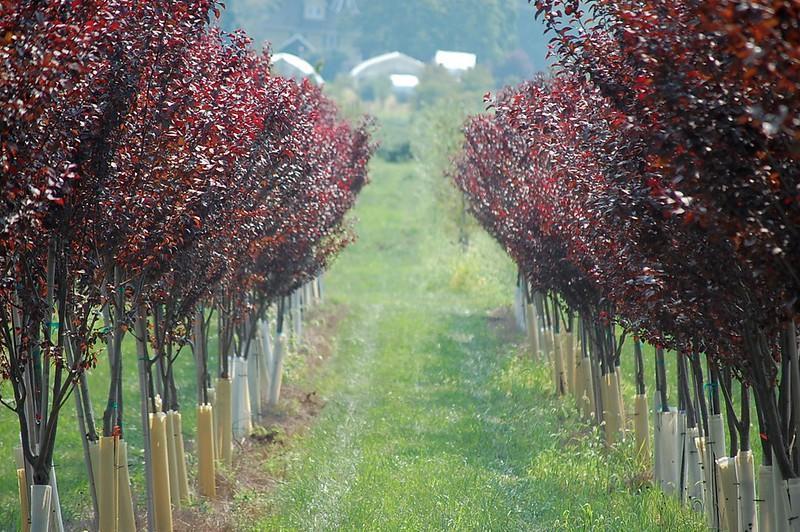
Thundercloud Cherry Plum is a small ornamental flowering tree in the rose family.
| Scientific Name | Prunus cerasifera |
| Height Rane | Thundercloud Plum will grow to be about 20 to 30 feet tall at maturity |
| Width Range | This deciduous garden tree grows to a width of about 25 feet. |
| Sunlight Requirements | Thundercloud Plum should be grown in full sun to bring out its colors. |
| Water Requirements | Thundercloud’ is moderately drought tolerant. However, it will become stressed during extended dry periods. |
| Fertilizer Requirements | They perform best when fertilized with a relatively balanced fertilizer. Add a 5-5-5 fertilizer in early spring before the new growth each year |
| Preferred Climate | USDA Hardiness Zones: 5, 6, 7, and 8. |
| Growth Rate | These trees can grow up to 24 inches per year |
Do you want a dark natural privacy fence around your yard to add a bit of interest to your otherwise boring and dull neighborhood. Try using Thundercloud Plum Tree. It has the darkest twigs and foliage of any plum and makes an excellent privacy screen.
It will be, without a doubt, different from any other trees or plants in your garden, and its irresistible, fragrant flowers will attract many butterflies to your home, which will be a sight to behold. However, keep in mind that these trees will need full sun and unfiltered sunlight throughout the day in order to show their full colors.
Moreover, they are nowhere as pest-hardy as many other privacy trees on this list and are prone to attacks from caterpillars, aphids, and moths. Nevertheless, these trees still make excellent privacy screens, and you can order them right here.
14. Yew
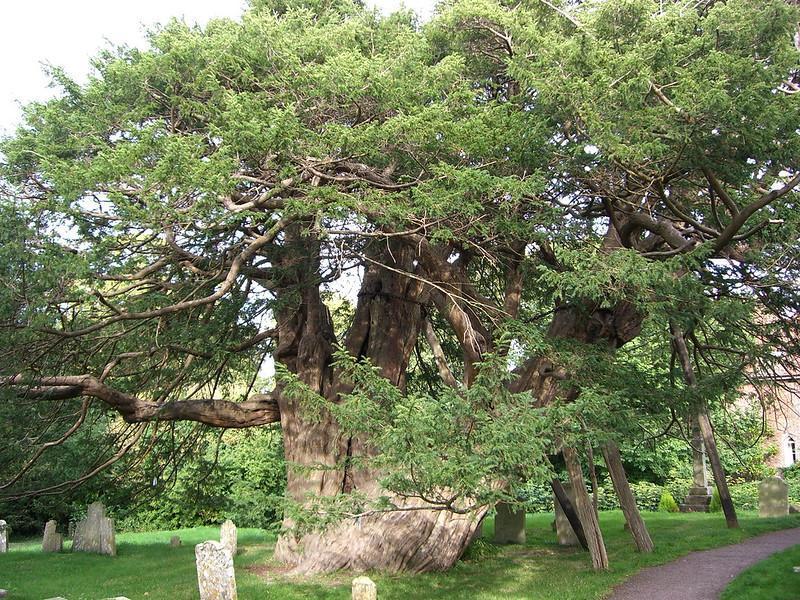
Similarly to the oak, the yew tree was revered by the Druids before the arrival of Christianity.
| Scientific Name | Taxus baccata |
| Height Rane | Mature trees can reach 20 m in height |
| Width Range | Mature yew trees have a width of up to 4 to 20 feet |
| Sunlight Requirements | Yew can be grown in full sun, partial shade, and even full shade. But for the best branching habit of your yew shrubs, plant them in full sun. |
| Water Requirements | Newly planted yews should be watered regularly for at least the first year However, once well established, you do not need to water very often. |
| Fertilizer Requirements | Yews are robust plants and don’t generally need additional feeding. However, you can sprinkle a high-nitrogen fertilizer, such as 16-8-8 |
| Preferred Climate | USDA Hardiness Zones: 4, 5, 6, and 7. Yew can grow on almost all soil types with adequate drainage |
| Growth Rate | Yew is a fast-growing plant and will quickly grow 30cms per year |
The yew tree in northern Europe likely has the most extended lifespan of any tree there. However, it has also gained widespread popularity in the United States over recent years. It makes a magical and attractive specimen in yards and gardens.
Although most commonly used as a centerpiece of attention and known for its religious significance, you can also use the yew tree as a privacy tree in your backyard. Its tolerance to shade also makes it an excellent choice for narrow spaces.
However, you should note that every part of yew trees, from leaves to its seeds, is poisonous to animals and humans. So, we will not recommend using them in case you have pets or small children in or around your home.
Want to plant a yew tree in your home? You can order using the link right here.
15. Chaste Tree
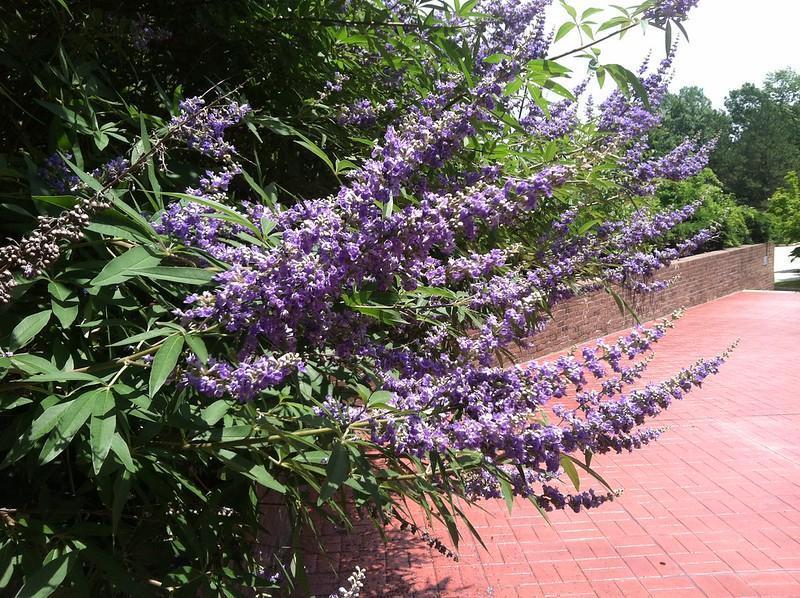
Chaste Tree is a flowering plant often used to alleviate premenstrual syndrome.
| Scientific Name | Vitex agnus-castus |
| Height Rane | The mature size of a chaste tree can range from 3 to 20 feet tall |
| Width Range | Mature trees can spread as much as 3 to 15 feet |
| Sunlight Requirements | The chaste Tree will grow well in full sun to partial shade However, for them to fully flower, they need to be in full sun |
| Water Requirements | Once established, you’ll probably never have to water a chaste tree. But, the first year, water a chaste tree every seven to ten days. |
| Fertilizer Requirements | A chaste tree doesn’t require much, if any, feeding. Sometimes, I use a slow-release shrub and tree fertilizer |
| Preferred Climate | USDA Hardiness Zones: 7, 8, and 9. Native to Europe and Asia, that does best in hot weather. |
| Growth Rate | Its rapid growth rate can add up to 24 inches per year in height. |
The chaste Tree belongs to the mint family of plants, and despite having numerous medical uses, nowadays, it is mainly planted as an ornamental plant in yards, gardens, parks, and sidewalks. Its thick growth also makes it great for natural privacy screens.
Moreover, its attractive appearance also attracted a lot of wildlife, such as butterflies and birds. However, do not worry, it is not prone to damage by deer, and you can use it as a hedging tree on your property without a worry whatsoever.
However, the plant is not all perfect. It can sometimes grow too aggressively, reseeds itself very quickly, and can become very weedy soon if not controlled. Nevertheless, if you think you can handle it and want to order it, use the link here.
…Consider These When Choosing Privacy Trees!
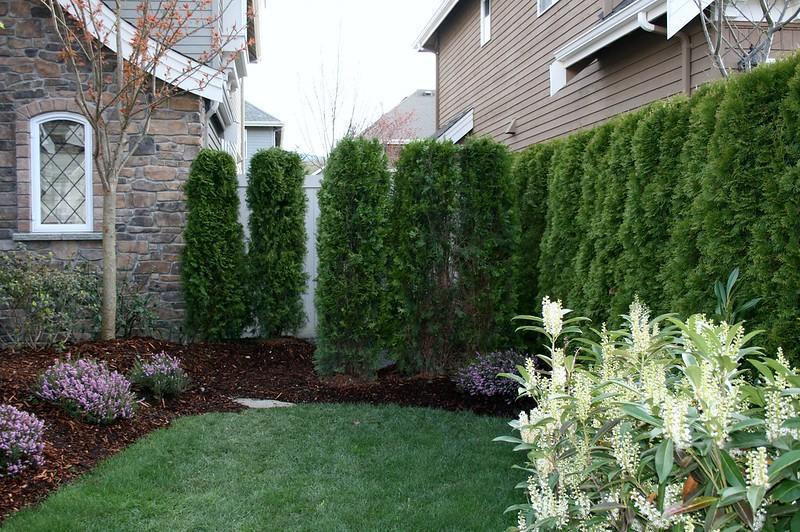
If you want year-round privacy, make sure that you choose an evergreen plant.
Continuing our conversation we left above, let’s quickly take a look at a few other factors and things you must keep in mind when choosing a privacy tree.
- Trees are often sold as bare-roots plants or container-grown trees. We suggest you go with bare-roots options as they are cheaper and diverse.
- It would help if you also visited a specialist tree retailer for advice.
- Consider pleached or stilted trees, specially trained trees with tall trunks that can clear a standard fence height and are helpful in more extensive gardens.
- Consider features such as autumn color, berries, spring flowers, and wildlife value.
- Check that your soil type and conditions are suitable
- Look at the height of the Tree’s crown and how much light it lets through the canopy to determine how much shade it will provide.
- Check the maintenance requirements
- Also, check the annual growth rate. If you want a quick cover over your yard, buy a large tree if you can afford it, or buy a tree with a rapid growth rate.
- Check the maximum height and spread of your desired privacy tree and ensure it won’t harm nearby structures when it reaches maturity.
- If you want year-round privacy, make sure that you choose an evergreen plant.
Final Thoughts
When you want to hide the contents of your backyard from public view, what’s more, cost-effective than a wall, more inviting than a fence, and more attractive than a lattice?
Just choose any one of the trees listed above. Privacy trees provide an excellent sense of privacy and are one of the greatest yard ideas for producing a lush backdrop for gardening.
I hope that this article was of assistance in your search for the perfect privacy tree.
Frequently Asked Questions
What is the fastest-growing tree for privacy?
When it comes to the fastest-growing privacy trees, hybrid poplar is at the top of the list. This is because it may attain a height of up to one meter in a year. On the other hand, the Leyland cypress, the green giant arborvitae, and the silver maple are strong contenders for second place because they grow almost two feet every year.
What is the cheapest privacy tree to plant?
The Leyland cypress is a low-cost option with a rapid growth rate and can be grown well in USDA zones 6 through 10. It reaches a maximum height of up to 50 feet at full maturity and has a growth rate of up to 3 feet per year.
Do privacy trees increase property value?
According to the clever blog, the installation of privacy trees that were integrated into a landscaped garden led to an increase in the overall value of the home that was 7% higher for medium-sized properties and 11% higher for larger-acreage properties.
How do you plant a tree for a privacy screen?
If you need a dense screen more rapidly, stagger the planting of your privacy trees in two rows. The rows should be separated by a distance equal to one-fourth of the mature width, and the trees should be planted in rows at a distance equal to one-half of the mature width.
Are privacy trees cheaper than a fence?
When you have a vast area that has to be screened off, hedging can be a more cost-effective option than fencing. Relatively speaking, the cost of hedging is around half that of fencing, and it will obviously be a living investment that increases in value over time.
Sources for Further Reading
Plants for Mixed Privacy Screens | University of Maryland Extension. (2022). Retrieved 8 December 2022, from https://extension.umd.edu/resource/plants-mixed-privacy-screens
What’s a fast-growing tree for a privacy screen? (2019). Retrieved 8 December 2022, from https://extension.oregonstate.edu/ask-expert/featured/whats-fast-growing-tree-privacy-screen
Using Trees and Shrubs for Privacy and Wind Screening. College of Agricultural Sciences. The Pennsylvania State University. (2022). Retrieved 8 December 2022, from https://extension.psu.edu/using-trees-and-shrubs-for-privacy-and-wind-screening
Editor’s Recommendations
Watering A Pine Tree: How To Do It Right! | A Comprehensive Guide
The Golden Guide To Gold Trees: 17 Types Of Gold Trees
Nature Sure Is Beautiful! 28 Different Types Of American Trees







